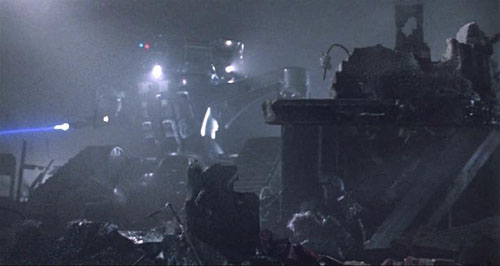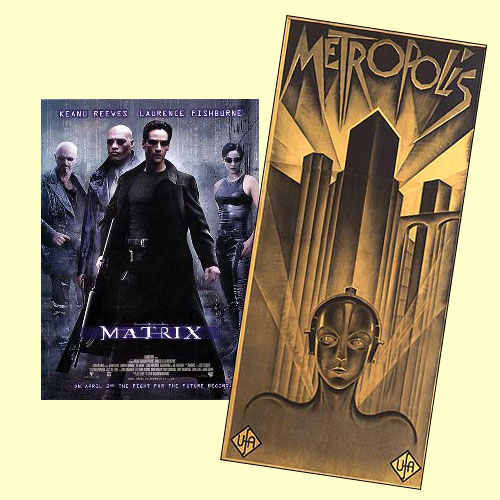Dystopia
by Andrew Boyd
Today, the evils of technology. The University of Houston's College of Engineering presents this series about the machines that make our civilization run, and the people whose ingenuity created them.

Dystopia isn't the opposite of Utopia. It's more like Utopia's evil neighbor. Dystopian writers peer into the future just like their utopian counterparts. But they don't see a perfect world. They see something frightening and dehumanizing. And technology is usually a culprit.
Aldous Huxley's Brave New World opens with a visit to the Central London Hatchery and Conditioning Center – a factory for breeding humans. Here sleep-learning is used to teach love of society. Henry Ford – icon of the industrial revolution – is idolized. The calendar no longer starts with the birth of Christ, it starts with the birth of the first Model T. Blissfulness pervades thanks to government-sanctioned drugs. There's no war or poverty. It's utopia, but utopia gone wrong. Technology's created peace and order. But it's stripped humankind of its soul. The world of Kurt Vonnegut's Player Piano is much the same – perfect yet purposeless.
George Orwell's Nineteen Eighty-Four describes a darker dystopia. There's no sign of a utopia run amuck, just totalitarianism aided by technology. Orwell's novel was written at the end of WW II. His characters live in a time shaped by nuclear war. Big Brother watches through large, two-way television screens and listens through hidden microphones. The Ministry of Love uses torture to brainwash citizens into loving Big Brother and The Party. A parody of Orwell's work appeared as a Super Bowl commercial in the year 1984. That's when Apple released the Macintosh. It had an exciting new innovation called a mouse.
The film Brazil is a dystopian black comedy. Machines are everywhere. But they don't work – just like the bureaucracy that spawned them. Woody Allen's Sleeper is lighthearted, but filled with dystopian visions – robotic dogs, mechanized confessionals, genetically altered bananas the size of canoes, even an orgasmatron. A two-hundred year old Volkswagen Beatle is discovered. The engine starts with the first turn of the key. Ah, but for the good old days.

Blade Runner is set in a future Los Angeles. It's squalid – dark from the relentless rain that fills the streets. We are left to imagine how the world got this way, but every frame paints a dismal picture. Blade Runner is typical of cyberpunk – a genre immersed in grim characters living grim lives thanks to technology abuse. And then there are the "machines take over the world" dystopias, found in films like Colossus: The Forbin Project, the Matrix trilogy, and the Terminator series.
Dystopia and technology will always be linked. They make for good storytelling. But they capture our imagination because there's a hint of truth. Cell phones let us communicate from almost anywhere. Television provides countless hours of entertainment. Technology is everywhere. And it's neutral. Whether we use it to build utopia or dystopia is up to us.
I'm Andy Boyd at the University of Houston, where we're interested in the way inventive minds work.
Blade Runner (1982). Accessed March 5, 2008, from the Internet Movie Database.
Brazil (1985). Accessed March 5, 2008, from the Internet Movie Database.
Colossus: The Forbin Project (1970). Accessed March 5, 2008, from the Internet Movie Database.
Aldous Huxley (1932). Brave New World. Harper Perennial Modern Classics, October 17, 2006.
The Matrix (1999). Accessed March 5, 2008, from the Internet Movie Database.
George Orwell (1949). Nineteen Eighty-Four. Plume, Centennial edition, May 6, 2003.
Sleeper (1973). Accessed March 5, 2008, from the Internet Movie Database.
The Terminator (1984). Accessed March 5, 2008, from the Internet Movie Database.
Kurt Vonnegut (1952). Player Piano. The Dial Press, January 12, 1999.